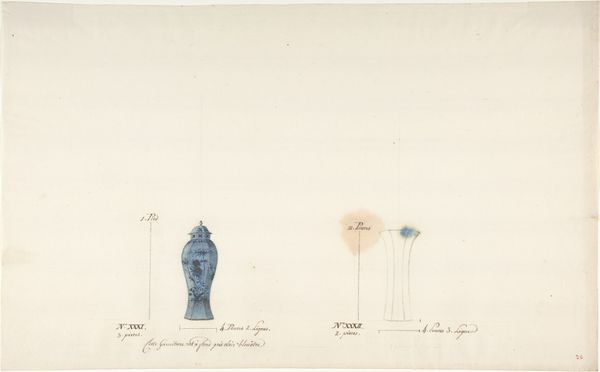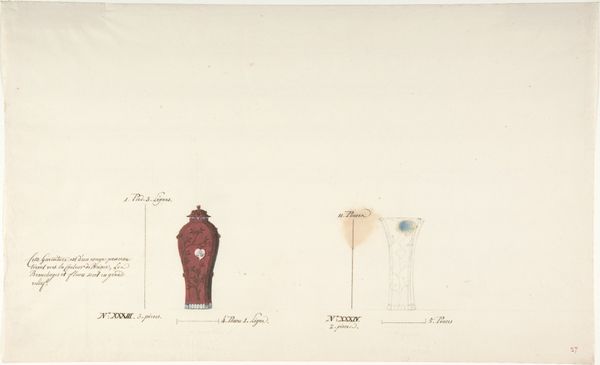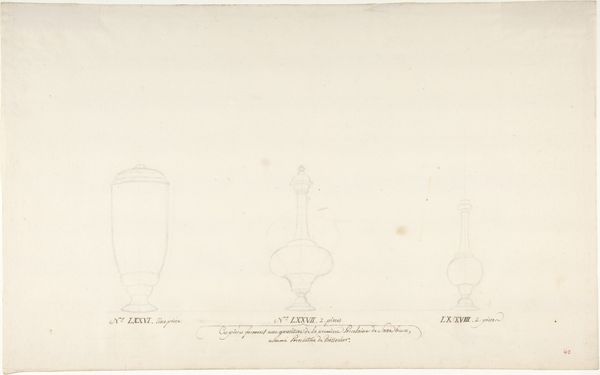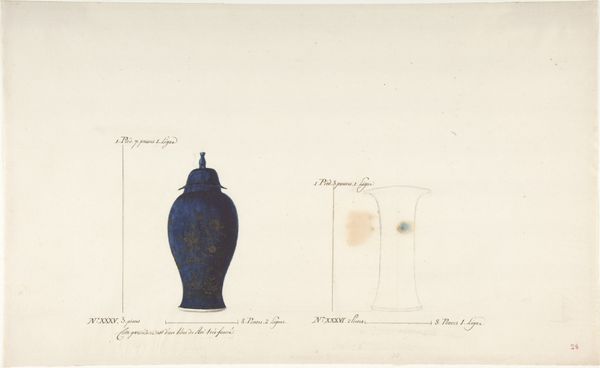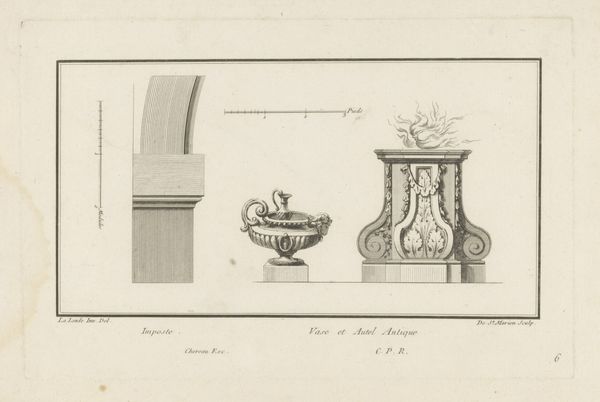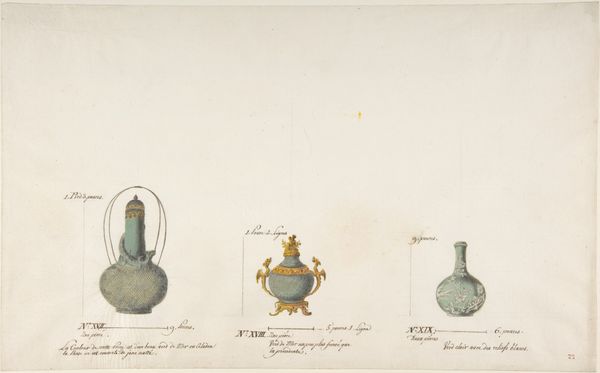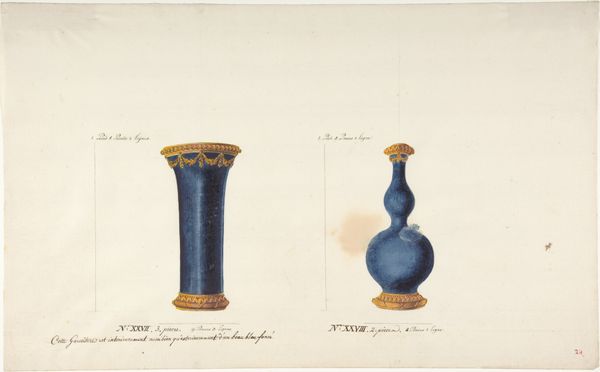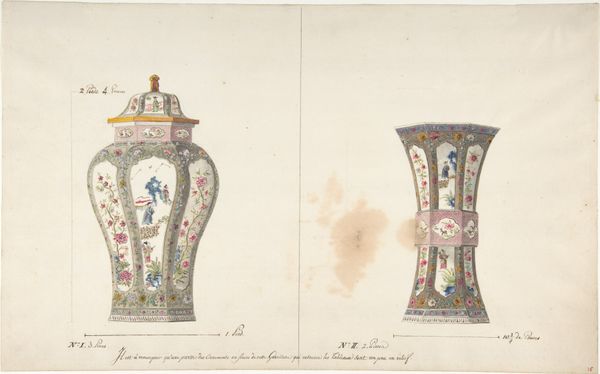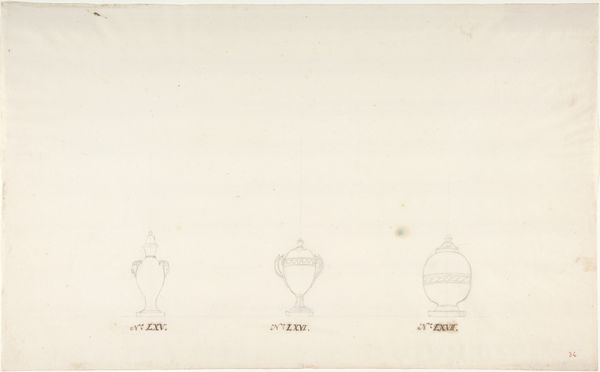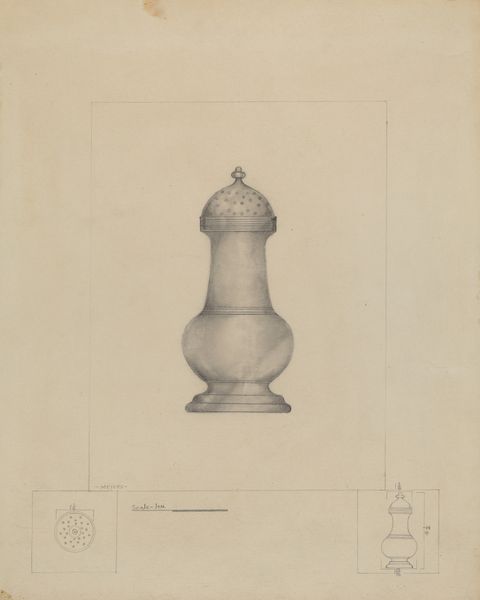
Dimensions: 14 7/8 x 9 1/4 in. (37.8 x 23.5 cm)
Copyright: Public Domain
Curator: I find this sheet so fascinating. It's called "Design for Two Vases," and it dates back to somewhere between 1765 and 1790. It’s an anonymous piece, created using drawing and print techniques, incorporating paper and watercolor mediums. Editor: It's intriguing, especially that vibrant blue. It's the first thing that jumps out—a deep, almost royal azure set against what appears to be a Rococo gold. There's something very immediate and precious about the vivid color, despite it just being a design. Curator: Precisely! The color carries so much weight, culturally. That blue, favored in the Rococo period, spoke to aspirations of luxury and connection with exotic materials. We often see this exact shade in fine porcelain of the era. And consider, the design is incomplete. The pale outline of the second vase presents this beautiful idea of potential, unfulfilled artistic visions. Editor: I hadn't quite considered that absence. And how does the incompleteness shape our view of vase as an object itself? There’s something powerful about designs; they speak to power and privilege, the commissioner who could simply manifest the designs into actual items. It also raises questions around labor practices and what such a completed piece signified in social settings. Curator: Exactly. The vase in itself becomes more than decoration; it becomes a visual symbol, perhaps representative of one's social status and sophistication. Even the scale lines included below each vessel indicate the emphasis on perfect proportion. The written description in French alludes to bunches of flowers adding to its high relief, solidifying this representation of luxurious taste. Editor: The choice of materials is also so interesting. Watercolor on paper gives this lightness, an almost fleeting quality to these designs. While they’re grounded in this solid color and vision, the work can become more transportable, viewed widely. Did these designs lead to actual vases, or are they visions of objects for a world beyond our reach? Curator: Well, isn’t that the most enduring power of design? That combination of concrete detail and endless possibility? I am inclined to believe that, whether executed or not, its essence remains embedded within cultural memory through surviving examples of Rococo stylistic patterns. Editor: Ultimately, this delicate sheet of paper provokes so much thought about status and materiality, design, and social meaning in pre-revolutionary France. It’s all beautifully encoded in these simple colors and graceful forms.
Comments
No comments
Be the first to comment and join the conversation on the ultimate creative platform.

